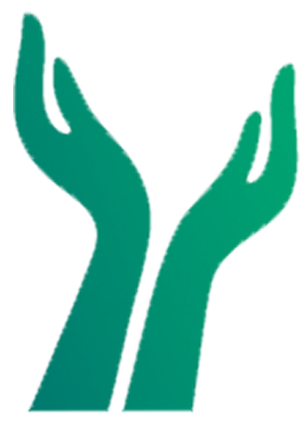10 Tips to Reduce Soreness After a Workout

When we do an intense workout or return to the gym after a long break, we know this will hurt the next day. The muscle pain and stiffness we experience around 12 to 24 hours after physical activity is Delayed Onset Muscle Soreness or DOMS.
DOMS is common when we try a new exercise or we increase the intensity. A little soreness is a great sign that we had a productive workout because when we use our muscles, we strain them and get small tears in our muscle fibres. When these tears heal, our muscles grow and get stronger. While it’s normal to feel a little soreness and tightness in our muscles, others have it worse, like not being able to walk or sit on the toilet. So how can we reduce feeling sore after a workout? Don’t search for squat alternatives yet because here are 10 things we can do:
Don’t Skip Warm-Up
We might be excited to dive into the intense routine right away, but skipping warm-up is a no-no. Warming up increases blood flow to the muscles to “wake them up”, which helps reduce recovery time after a workout. Do more than passive stretching by opting for dynamic stretching and doing light versions of some exercises like biking, jumping rope, lifting light weights, walking, or slow jogging. We can also use a foam roller to loosen tight muscles before exercising.
Use Proper Form and Technique
Make sure to do exercises the right way to prevent muscle strain or injury. To know whether or not we are using the proper form and technique, we can get a personal trainer who can guide us in our fitness journey. They can show us the proper way to do a routine, lift weights, or use machines and equipment.
Wear Compression Tights
Why wear compression pants? Well, they don’t just show off our leg gains, they also help speed up muscle repair and reduce muscle fatigue after our workout. Do compression tights work? Yes, compression tights support and stabilise our muscles while we work out by absorbing some of the strain while we work our muscles as they increase blood flow and oxygenation.
Stay Hydrated
Dehydration can slow down lactic acid removal, which will make us sorer after a workout. Without proper hydration, we might experience cramping and dizziness. Water helps manage our body temperature, loosen our joints, and transport nutrients to create energy. Staying hydrated improves our muscle flexibility, builds our strength, optimises our performance, and prevents injury, fatigue, and muscle soreness.
Electrolytes potassium and sodium can also help prevent and relieve muscle cramping. We can replenish the electrolytes and sodium we lose during physical activity by drinking around 1.5 to 2 litres of low-sugar sports drinks throughout the day.
Don’t Forget to Cool Down
Always wrap up workouts with a proper cool down. This allows our heart to return to its normal state gradually, helps relieve stress, and prevents muscle soreness and injury. Our muscles are more relaxed and flexible while they’re still warm, so stretching after working out can help circulate blood away from our muscles and back to our heart to help recovery.
Try Myofascial Release
Myofascial release helps relieve tension in the muscle’s connective tissue. We can use a foam roller to roll our muscles and increase blood flow into them, reducing DOMS and improving our performance in our workouts. Invest in a quality foam roller as we can include it in warm-ups, cool-downs, and recovery.
Getting a massage after working out can also reduce pain and soreness significantly, and regularly getting it can increase our body’s ability to fight off DOMS. Muscles massaged immediately after a workout are found to contain more dilated blood vessels than the muscles that did not get massaged. Better blood flow into the muscles may help improve recovery by promoting tissue regeneration and reducing fibrosis.
Avoid Complete Rest
Rest is important for muscle recovery after an intense workout, but it’s important to stay active during rest. We can do light exercises during rest days such as walking, swimming, or yoga. Avoid complete rest and immobilisation. Instead, do active recovery to help prevent lactic acid buildup, remove toxins, and boost circulation.
Eat a Lot of Protein
Eating meals that contain healthy, high-quality proteins can aid in our muscle recovery and provide amino acids that help repair and rebuild muscles. This can help reduce muscle soreness after exercise. Eating a healthy snack around 45 minutes after a workout can help replenish our muscle energy stores and start the recovery process.
Get Enough Sleep
Sleep deprivation can increase the stress hormone cortisol, which can delay recovery after exercise. While physical activity helps us sleep better, improve sleep quality further by winding down two hours before bed. This includes turning off all technology as smartphones and tablets produce blue light that suppresses the sleep hormone melatonin. Having a good night’s sleep also helps our bodies recover and perform well in our workouts.
Know Your Limits
Pushing ourselves to do more may be tempting, but increasing intensity or the weight amount too soon can cause an injury. We should remember to progress slowly and be aware of our limits in our active fitness. It would also help to join a group fitness training to get support and reminders to avoid going beyond what we can.
Sore muscles are common and normal. They are an indication that we had a great workout as our muscles will grow and get stronger. However, we can help minimise the pain with basic measures. We can also help prevent injury to our muscles, tendons, or joints by knowing our limits and by using proper form and technique in our workouts. Joining a group or getting an instructor can give us guidance on exercising the right way and working within our limits for safer, more productive workouts.

